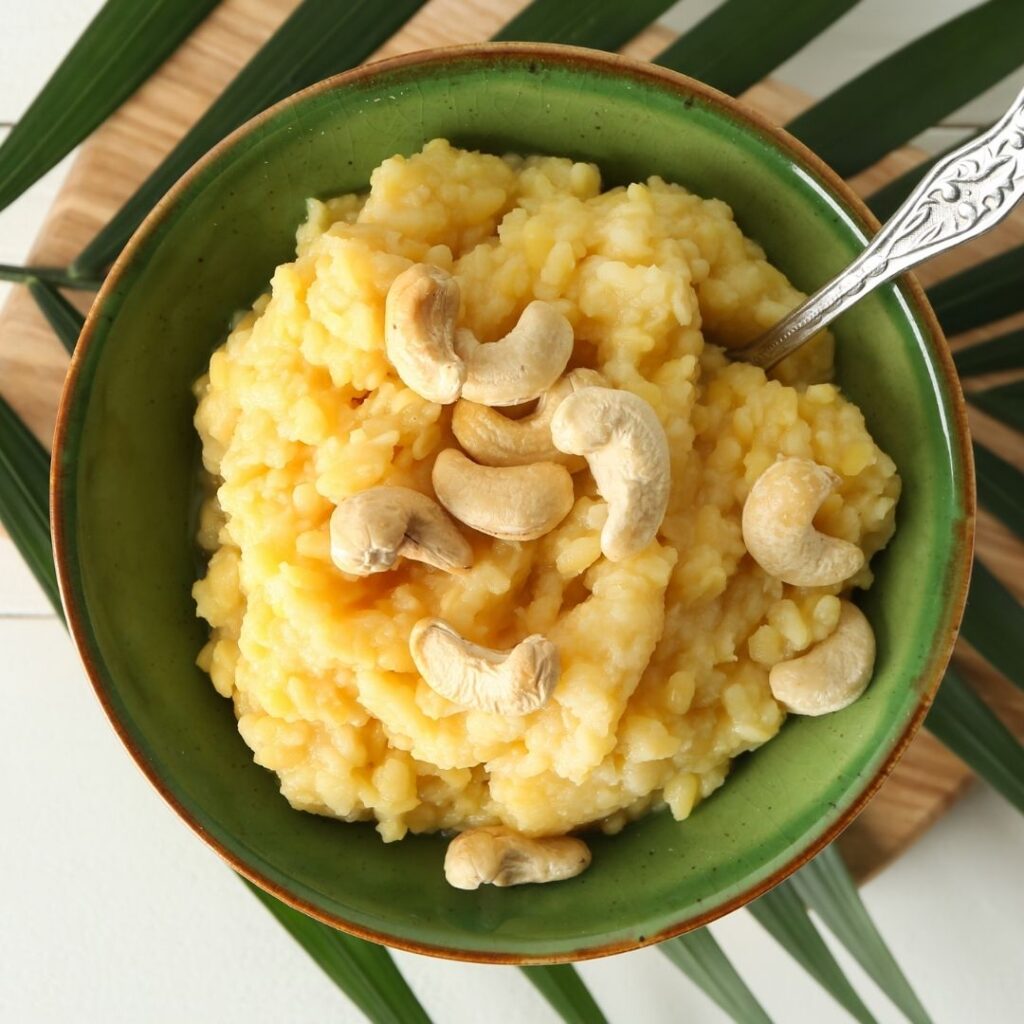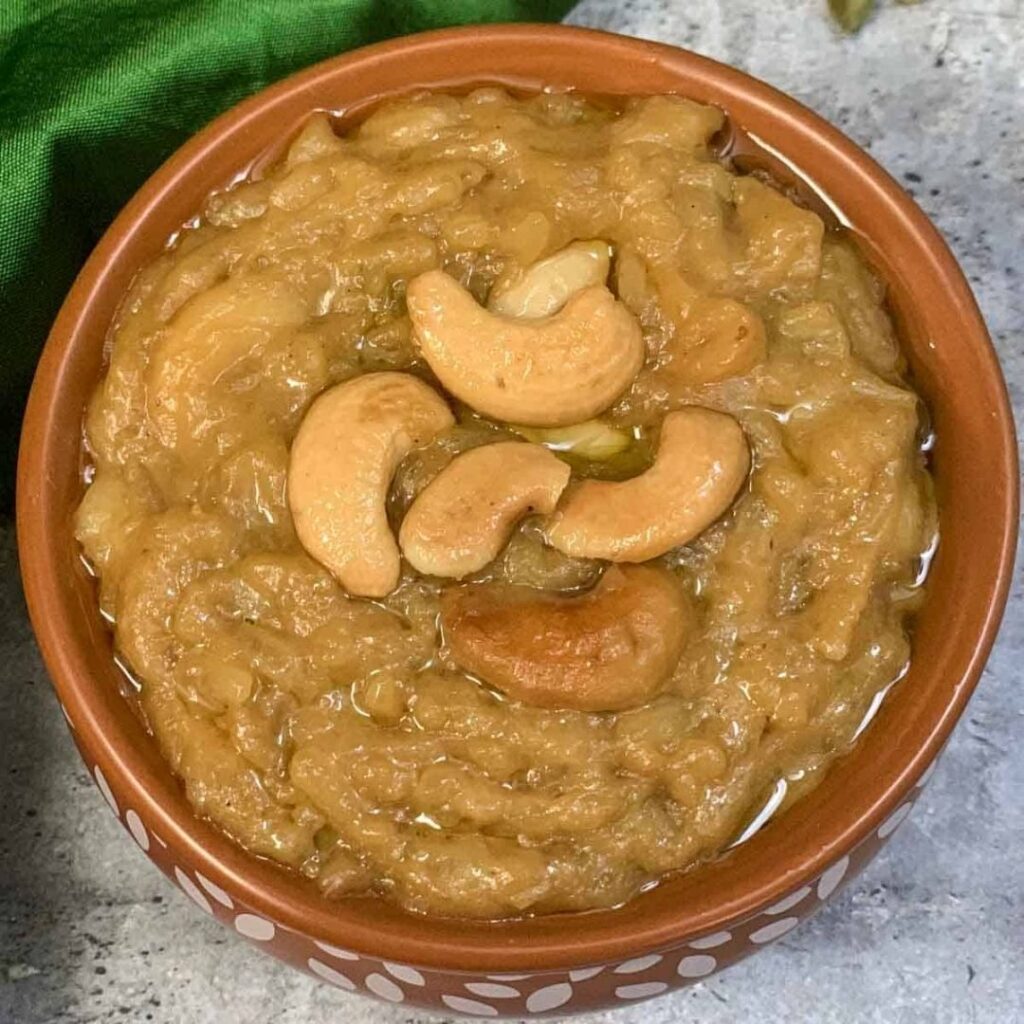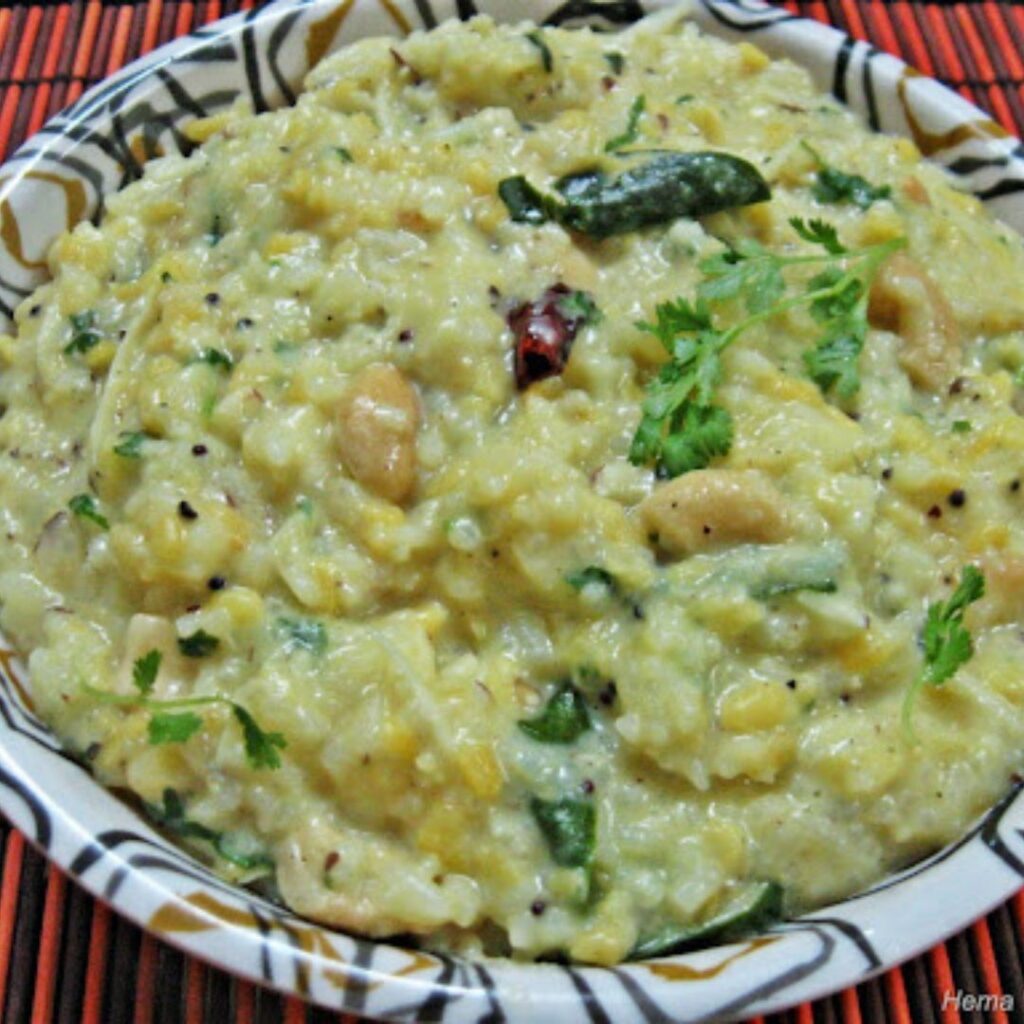Discover healthy Pongal recipes for diabetics. Enjoy the festive season with our sugar-controlled, delicious, and nutritious Pongal dishes. Stay fit!
Pongal is a traditional South Indian dish that is usually prepared during the harvest festival of the same name. It is a rice and lentil based dish that can be made in sweet or savory versions. Pongal is a wholesome and nutritious meal that can be enjoyed by everyone, including diabetics.
However, diabetics need to be careful about the ingredients and the portion size of pongal, as it can be high in carbohydrates and calories. In this blog, we will share some tips and recipes for making pongal recipes for diabetics that are healthy, tasty and easy to make.

Tips for Making Pongal Recipes for Diabetics
- Use brown rice instead of white rice, as it has more fiber and a lower glycemic index. Brown rice also has more vitamins, minerals and antioxidants than white rice.
- Use low-fat milk or water instead of full-fat milk or coconut milk, as it reduces the fat and calorie content of pongal. You can also use almond milk or soy milk for a vegan option.
- Use sugar substitutes like stevia, erythritol or monk fruit instead of sugar or jaggery, as they have zero or negligible calories and do not affect blood sugar levels.
- Use less ghee or oil for tempering, and use healthy fats like olive oil, coconut oil or sesame oil. You can also skip the ghee or oil altogether and use a non-stick pan or a pressure cooker.
- Add more vegetables, nuts, seeds and spices to your pongal, as they increase the fiber, protein, healthy fats and antioxidants in your dish. They also add flavor and texture to your pongal.
- Control your portion size and enjoy pongal as a part of a balanced diet. Do not overeat pongal, as it can spike your blood sugar levels and lead to weight gain. You can also pair pongal with a salad, a soup or a curry for a complete meal.
Pongal Recipes for Diabetics
Here are some pongal recipes for diabetics that you can try at home. They are simple, delicious and diabetic-friendly.
Chakra Pongal Recipes
Chakra pongal is a sweet version of pongal that is made with rice, moong dal, milk, sugar substitute, cardamom, nutmeg, saffron, cashew nuts and raisins. It is a festive dish that is rich in flavor and aroma.

Ingredients
- 1/4 cup yellow moong dal (split yellow gram)
- 1 tbsp chana dal (split bengal gram)
- 1 cup raw brown rice
- 1 1/4 cups low-fat milk
- 1 tsp cardamom (elaichi) powder
- 1/4 tsp nutmeg (jaiphal) powder
- a few saffron (kesar) strands, optional
- 1 tbsp chopped cashew nuts
- 1 tbsp raisins
- 2 tbsp sugar substitute
Procedure
- Heat a non-stick pan, add the dals and dry roast on a medium flame till the raw smell disappears, while stirring continuously. Keep aside.
- Clean and wash the rice. Add the dals, milk and 2½ cups of water, mix well and pressure cook for 5 whistles or till the rice and dal become soft. Allow the steam to escape before opening the lid. Keep aside.
- Combine ¼ cup of milk and ¼ cup of water in a deep non-stick pan and bring to a boil. Add the cardamom powder, nutmeg powder, saffron, cashew nuts, raisins, cooked rice and dal mixture, mix well and stir it on medium flame for 1 to 2 minutes.
- Remove from the flame, add the sugar substitute and mix well.
- Serve hot or cold.
Khara Pongal Recipe
Khara pongal is a savory version of pongal that is made with rice, green gram dal, ginger, pepper, cumin, curry leaves, cashew nuts and ghee. It is a spicy and comforting dish that is ideal for breakfast or lunch.

Ingredients
- 1 cup rice
- 1/2 cup green gram dal
- 1 tbsp grated ginger
- 1 tsp black pepper
- 3 cups water
- 1 tsp cumin seeds
- 1/2 cup low-fat milk, optional
- 2 tbsp ghee
- salt to taste
- 8 broken cashew nuts
- a few curry leaves
Procedure
- Wash rice and green gram dal together. Add 3 cups of water and pressure cook or cook till done. Add salt, ginger, curry leaves and milk if using. Mix well.
- Crush pepper and cumin seeds. Fry cashew nuts, cumin seeds and pepper in little ghee. Then pour over the cooked rice and dal mixture. Mix well and serve hot with ghee on top.
Oats Ven Pongal Recipe
Oats ven pongal is a healthy twist on the traditional ven pongal that is made with oats, moong dal, pepper, cumin, cashew nuts, curry leaves and ghee. It is a high-fiber and low-glycemic dish that is suitable for diabetics.

Ingredients
- 1 cup oats
- 1/2 cup moong dal
- 1 tsp black pepper
- 3 cups water
- 1 tsp cumin seeds
- salt to taste
- 2 tbsp ghee
- 8 broken cashew nuts
- a few curry leaves
Procedure
- In a pressure cooker, roast the oats for a while. Remove and roast the moong dal. Wash the moong dal and add the oats to the pressure cooker. Add the water and salt. Pressure cook for 2 -3 whistles.
- Once the pressure falls, heat another pan with ghee, temper with cashew nuts, curry leaves, pepper, cumin. Pour over the cooked oats and dal. Mix well and serve hot.
We hope you enjoyed these pongal recipes for diabetics. Do try them and let us know your feedback. Happy pongal! 🌾
How many calories are in pongal recipes for diabetics?
The number of calories in pongal recipes for diabetics may vary depending on the ingredients and the portion size. However, here are some approximate values for one serving of each recipe that I shared with you earlier:
- Chakra Pongal: 133 calories
- Khara Pongal: 212 calories
- Oats Ven Pongal: 131 calories
What is the nutritional value of pongal recipes for diabetics?
Pongal recipes for diabetics are generally high in fiber, protein, healthy fats and antioxidants, as they use ingredients like brown rice, moong dal, oats, nuts, seeds and spices. They are also low in sugar, fat and calories, as they use sugar substitutes, low-fat milk and less ghee or oil. However, the exact nutritional value of pongal recipes for diabetics may vary depending on the recipe, the ingredients and the portion size. Here are some approximate values for one serving of each recipe that I shared with you earlier, along with the sources:
- Chakra Pongal: 133 calories, 5.1 g protein, 24.3 g carbohydrates, 1.6 g fiber, 1.7 g fat, 0 mg cholesterol, 19.9 mg sodium
- Khara Pongal: 212 calories, 5.5 g protein, 29 g carbohydrates, 2.4 g fiber, 8.2 g fat, 0 mg cholesterol, 11.2 mg sodium
- Oats Ven Pongal: 131 calories, 4.6 g protein, 20.8 g carbohydrates, 3.2 g fiber, 3.8 g fat, 0 mg cholesterol, 9.8 mg sodium
Conclusion
Pongal is a delicious and festive dish that can be enjoyed by diabetics with some simple modifications. By choosing the right rice, adding more lentils, using less ghee and milk, skipping the jaggery and sugar, and spicing it up, you can prepare pongal recipes for diabetics that are tasty and healthy.
You can also serve your pongal with some low-GI accompaniments, such as vegetable curry, salad, or yogurt, to make it a balanced and satisfying meal. Try these tips and tricks to enjoy this traditional dish without compromising your health. Happy Pongal!
Read More Thekua Recipe with Jaggery: A Sweet Chhath Puja
Frequently Asked Questions (FAQs)
Can diabetics eat Pongal?
Yes, diabetics can enjoy Pongal in moderation with careful recipe adjustments. Opt for brown rice, millets, or quinoa instead of white rice, and use natural sweeteners like jaggery or stevia. Choose low-fat dairy options and limit fried accompaniments.
What are some healthy Pongal variations for diabetics?
Try Savoury Ven Pongal with mixed vegetables and spices, Moong Dal Pongal with protein and fiber, or Lemon Pongal for a refreshing twist. Experiment with millets like foxtail or kodo for added nutrients.
How can I control the sugar content in Pongal recipes?
Reduce the amount of rice used and add more vegetables or lentils. Use natural sweeteners like jaggery or stevia in moderation. Avoid adding store-bought chutneys or sweets with high sugar content.
What are some healthy alternatives to ghee in Pongal?
Use vegetable oils like canola or sunflower oil in moderation. Opt for low-fat dairy options like skimmed milk or curd. You can also try using coconut oil or ghee in very small quantities for added flavor.
Are there any diabetic-friendly sweet Pongal options?
Yes, try Chukku Pongal made with jaggery and nuts, or Semiya Payasam with reduced sugar and skimmed milk. You can also experiment with fruits like banana or mango as natural sweeteners.
What are some healthy accompaniments for Pongal for diabetics?
Opt for fresh vegetable stews, lentil curries, or grilled vegetables. Avoid fried snacks and opt for baked or roasted options. Choose low-fat yogurt or buttermilk as dips.
Can I eat Pongal for breakfast if I have diabetes?
Yes, Pongal can be a healthy breakfast option for diabetics. Pair it with protein sources like eggs or lentils, and add vegetables for fiber. Avoid sugary drinks and opt for unsweetened tea or coffee.
What are some tips for managing portion sizes when eating Pongal?
Use smaller plates and bowls. Eat slowly and savor each bite. Pay attention to your hunger cues and stop eating when you feel satisfied.
Where can I find diabetic-friendly Pongal recipes?
Look for recipes specifically designed for diabetics online or in cookbooks. Many websites and apps offer healthy Pongal variations. Consult a registered dietitian for personalized recommendations.
Is it safe to eat store-bought Pongal mixes if I have diabetes?
Read the labels carefully and check the sugar and fat content. Choose options with low sugar and whole grains. It’s generally safer to prepare Pongal at home using fresh ingredients.
Remember, moderation is key for diabetics. Enjoy Pongal as part of a balanced diet and consult your doctor or a registered dietitian for personalized advice.
